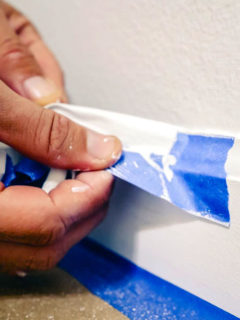Musculoskeletal disorders, or simply MSA, encompass a range of physical ailments that can crop up in the workplace. A sore neck, back pain, tennis elbow or sore wrists… We all know a colleague who has suffered from it. Fortunately, there are simple tools and tricks to prevent MSA. Below, we look at how best to set up your workplace and what tools you can use to maximise your efforts. Here’s to your health!
What are the causes of MSA?
Where does MSA actually come from? The human body has about 650 muscles, 200 bones and 100 joints. So it’s not so surprising that there can be a kink in it at times. Usually, the cause of muscle and joint pain can be found in:
- Lifting or moving (too) heavy loads.
- Standing or sitting in the same position for too long.
- Working in an environment that is too cold or too hot.
- Adopting poor posture, e.g. a hunched back.
- Performing actions repetitively that always strain the same muscles or joints.
What are the consequences of MSA?
MSA can lead to various types of disorders and ailments. It is important to know that musculoskeletal disorders are progressive. An ailment that seems harmless at first glance will get worse over time if you don’t intervene. Even during rest periods, you may then suffer from it. As soon as the first symptoms appear, it is necessary to take action and identify the cause. MSA can lead to the following types of physical discomfort and injury:
- Pain at the elbows due to repetitive movements.
- Leg pain due to too little movement or variety.
- Back pain due to poor posture or lifting too heavy goods.
- Pain in the wrists due to repetitive movements such as wringing out a mop or using a computer mouse.
Besides these physical complaints, MSA also brings a financial burden. Firstly, for the companies involved due to increased absenteeism and additional workload on other colleagues. Secondly, for society due to higher health costs, unemployment rate, etc.


See the full overview of RAJA's ergonomic products on our webshop or in our catalogue. You will find numerous solutions for your office, warehouse or shop. You always easily recognise these products by the 'MSA prevention' logo.
10 tips to prevent MSA in the workplace
With the list of tools and improvements below, it is possible to help prevent MSA. Whether you already work sitting down at a desk or walking around a warehouse, you will find that a few simple adjustments will go a long way towards helping you.
► 1. Choose the right sitting position at your desk
For those who have to spend many hours on an office chair every day, good sitting posture is crucial. Therefore, some tips to make sitting a lot more pleasant and ergonomic:
- [1] Adjust the top edge of your monitor to eye level if you were to look straight ahead. The screen is best at an arm’s length away.
- [2] Make sure you have a dynamic chair where the backrest can move with you, away from the seat. Your back will thus be permanently supported. Also provide a backrest that follows the natural curve of your back.
- [3] Adjust the desk and armrests to elbow height.
- [4] The height of the seat should be equal to the height of the hollow of your knee. To do this, bend your knee at a 90° angle and let your feet rest flat on the floor.
- [5] Finally, make sure there is enough space between the hollow of your knee and your seat for a fist. This will prevent your knee hollow from getting pinched and avoid pinched nerves and blood vessels.
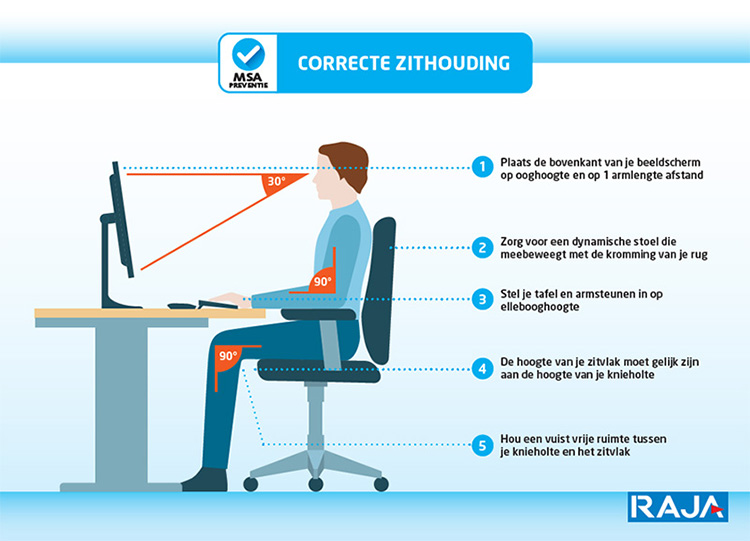
► 2. Adjust your work table to the correct height
This tip relates to people who need to work standing upright at a table. Think of a packing station, for example. Working at the right height is then crucial to avoid MSA. If you work too low, you will have to bend your torso, neck and back too far. In turn, a work surface that is too high can cause you to have to lift your arms and shoulders too often to complete the task. We want to avoid that too.
The diagram below shows the best height for your table. Good to know: provide enough space under your work surface for your feet and knees. That way you will not be hindered in your movements. Also consider installing a sit-to-stand aid. It is best to set the seat at an angle of about 15°. This will make it easier for you to change your position.
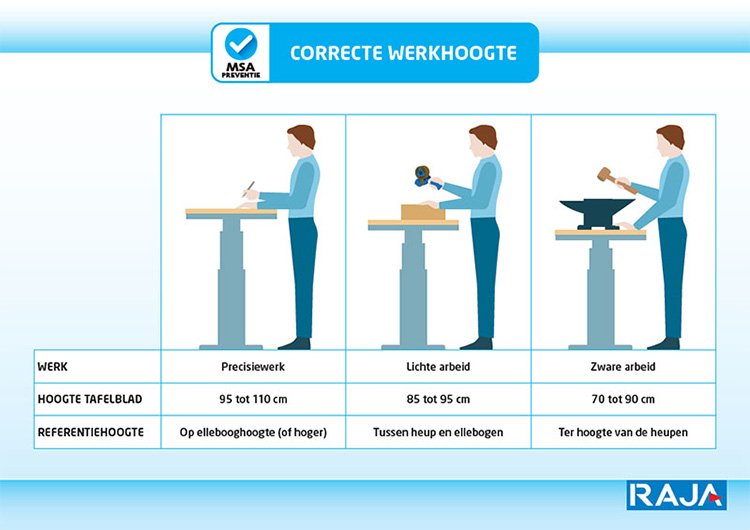
► 3. Reduce the horizontal gripping distance
Tools or office equipment that you need regularly are best placed within immediate reach. This is particularly useful to know when setting up a packing table. Two distances play a role here:
- Maximum gripping distance: this corresponds to the distance between your wrist and shoulder (when you keep your arm extended). Place the material you need less frequently here. This is the red zone in the image below.
- Comfort grip distance: this corresponds to the distance between your wrist and elbow. You use this for materials you need to grip much more frequently. This is the green zone in the image below.
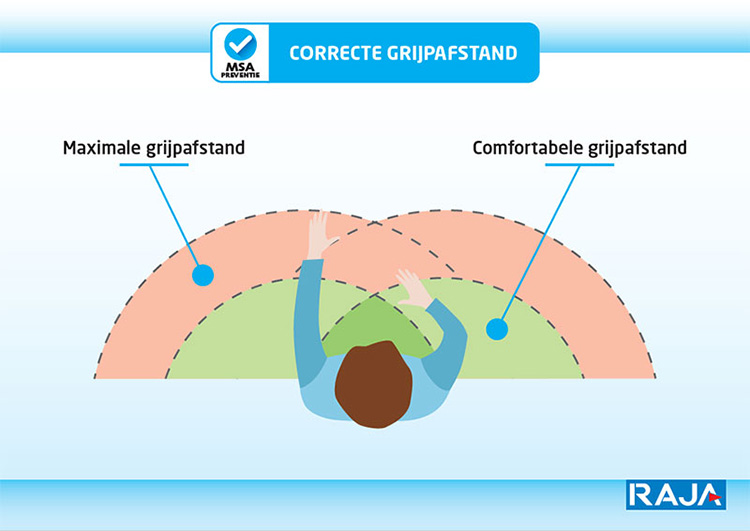
► 4. Reduce the vertical gripping distance
Lifting goods above shoulder height is often very stressful for your back and shoulders, for example. If you need to place a product in a high rack (or take it out), use a folding ladder or step stool. This way, you easily reduce the working height or ‘vertical gripping distance’. The same ergonomic principle is applied to pallet boxes with an open front. This avoids having to lift your goods unnecessarily far up to reach the edge of the crate.
]► 5. Facilitate lifting and moving heavy objects
Make sure you only move heavy objects over the shortest possible distance. You can enlist the help of rolling warehouse equipment such as an electric pallet truck or scissor pallet truck for this purpose. These actually do all the heavy work on your behalf. An exceptionally handy variant is the lift table. You first lower the lift table all the way down to the lowest position to lift your goods onto it. Then you use the foot pump to raise the table to the right height. Because you don’t have to lift as high, you save your back considerably. Finally, thanks to the wheels, you can easily roll your goods from A to B.
Good to know: rolling equipment should preferably be pushed with both hands. Pulling is generally not recommended. Finally, keep these points in mind when lifting objects:
- [1] Frame the load with both feet.
- [2] Bend through the knees.
- [3] Maintain the natural curve of your back.
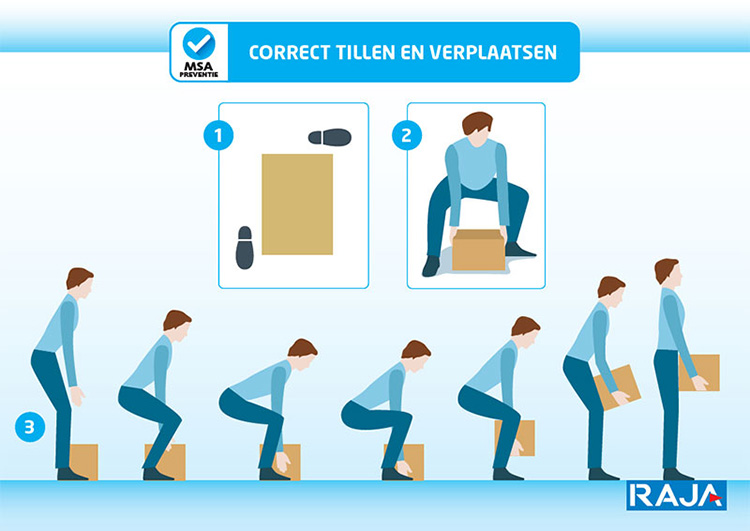
► 6. Automate the work process
Why not just leave certain work to machines? You can use them perfectly to perform heavy work or repetitive actions. This way, you avoid a lot of physical strain and also save valuable working time. A few frequently cited examples are:
- Roller conveyors: ideal for moving an endless series of boxes. This saves your warehouse workers a lot of walking kilometres.
- Pallet wrapper: with this machine you wrap your pallets without any physical effort. Such a wrapper also prevents waste, as the machine knows better than anyone how much stretch film you need.
- Carton sealer: as the name suggests, this machine seals cartons on a conveyor belt. This leaves your employees with little to no physical handling to do and eliminates a lot of repetitive work for them.
► 7. Change positions regularly and keep moving
Taking plenty of walking breaks, alternating between standing and sitting work… It all helps to ensure continued blood flow in your veins. Those who have to work standing up for long periods can benefit from a ‘standing mat’ or anti-fatigue mat. The technique behind this mat is at once simple and ingenious. An anti-fatigue mat has a grooved structure with studs. This subtly creates an uneven surface, encouraging your feet and legs to keep moving. This can then enhance circulation and prevent blood from stagnating in the veins.
A second aid is the sit-to-stand chair. You can switch between sitting and standing work very easily with this type of chair. Thanks to the gas spring under the seat, you adjust the height in no time.
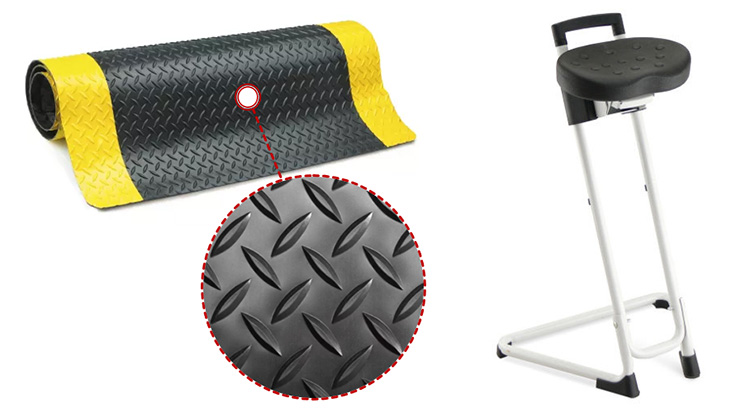
► 8. Use materials that make your work easier
A number of products are designed to ensure that you have to put less pressure on your joints and muscles. So they can significantly ease your workload. Let’s take a look at a few popular tools that can help prevent MSA:
- Aluminium trucks: these models are much lighter than standard trucks. This makes them extra ergonomic and ensures that you have to put less effort into lifting/moving your goods.
- Safety knives: here, look especially for the ones with an ergonomic handle. This ensures a better grip and makes cutting easier. These knives are usually extra safe because the blade is retractable or shielded.
- Mop press: instead of wringing out your mop by hand, use the press. This is a lot less stressful on your wrists.
- Pre-stretched stretch film: because it is already pre-stretched to its maximum extent, this film requires less effort when wrapping a pallet.
► 9. Wear suitable work clothing
Clothes don’t just make the man – they can also help prevent MSA. Therefore, make sure your employees wear work clothes that are adapted to their physique and working conditions. Among other things, it is important that they wear flexible clothes that do not hinder their movements. In terms of personal protective equipment, look out for:
- Safety gloves that fit well around your hand and wrist. For example, use this size guide for gloves.
- Dust masks in a collapsible model: these often fit your face better. A vented dust mask also reduces exhalation resistance and reduces CO2 levels, humidity and temperature inside the mask.
- Safety shoes without metal parts: these are much lighter and more comfortable to wear. Add a flexible running sole and you have shoes that allow you to walk around your warehouse for hours.
- Hearing protection if you work in a too-loud environment. Keep in mind that the limit for hearing damage is set at 80 dB.
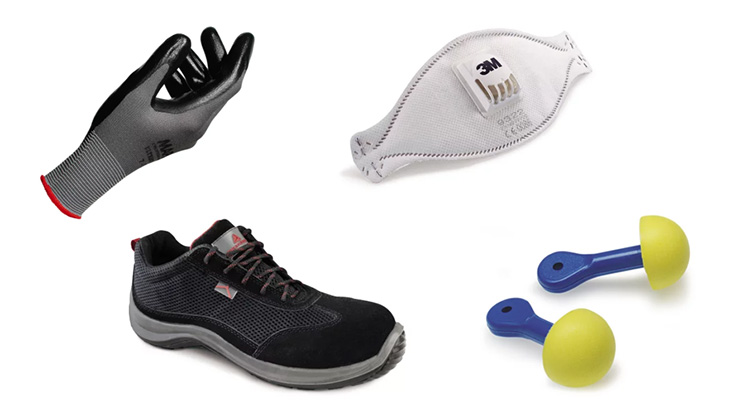
► 10. Keep the temperature under control
]Icy cold in winter, scorching hot in summer… In a warehouse, temperatures can fluctuate quite a bit. Did you know that a working environment that is too hot or too cold can trigger MSA? So always keep a close eye on the weather forecast and anticipate extreme conditions. In some previous articles, we already collected guidelines you can follow to keep work pleasant in very high temperatures or very low temperatures.
Sources:
www.preventievanmsa.be
www.werk.belgie.be/nl/themas/welzijn-op-het-werk
www.beswic.be/nl/themas/ergonomie/de-ergonomie-om-de-fysieke-belasting-en-msa-te-verminderen
www.ergonomiesite.be/computerwerkplek













